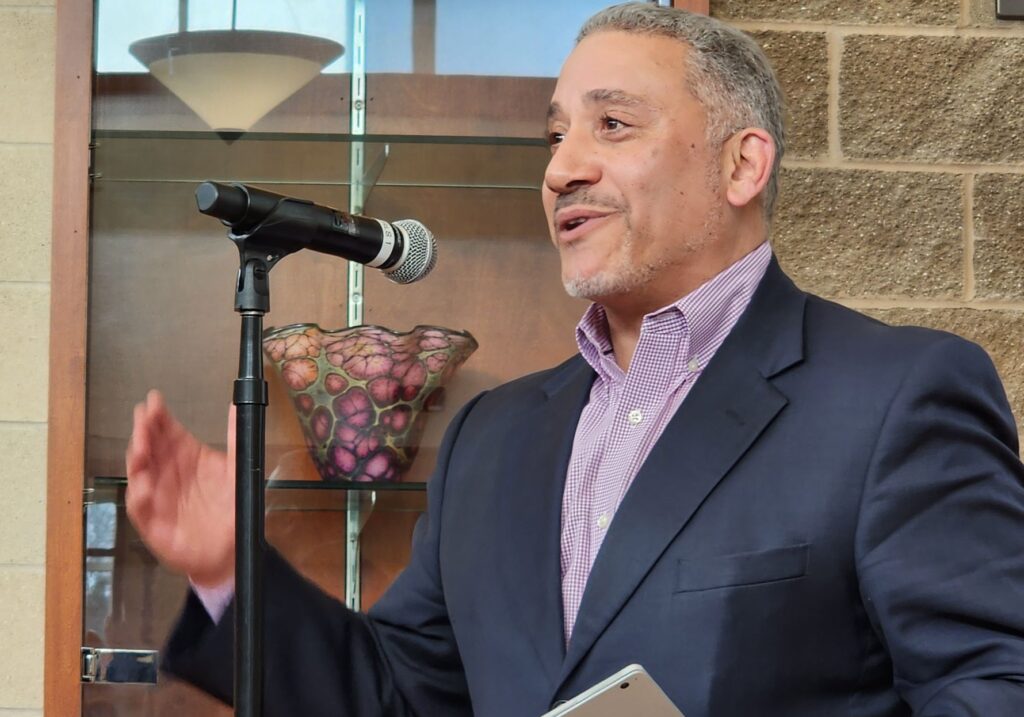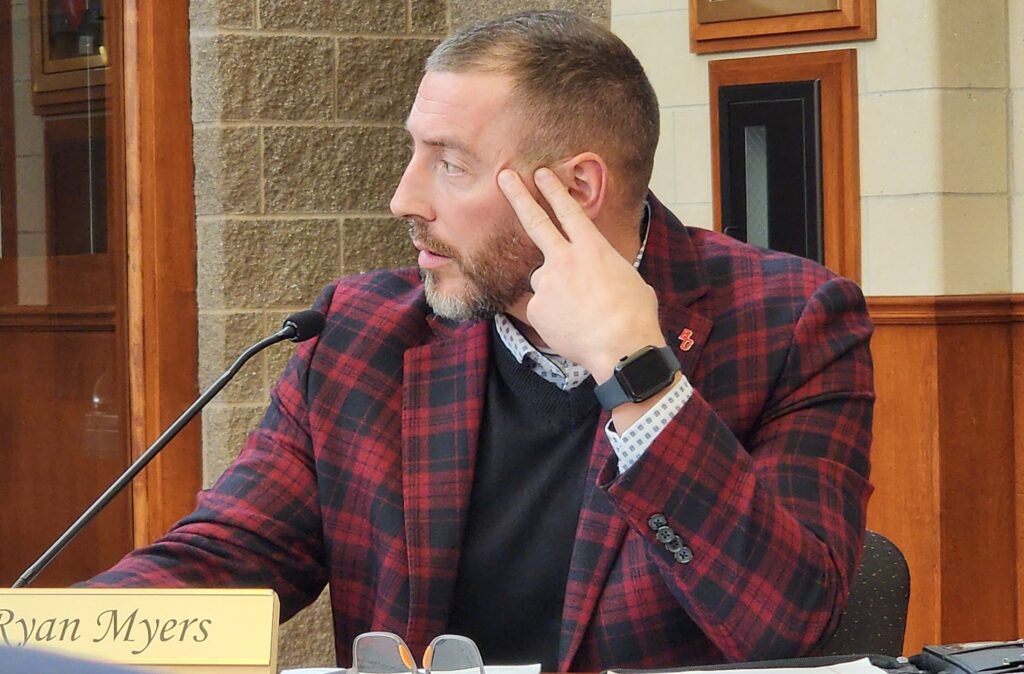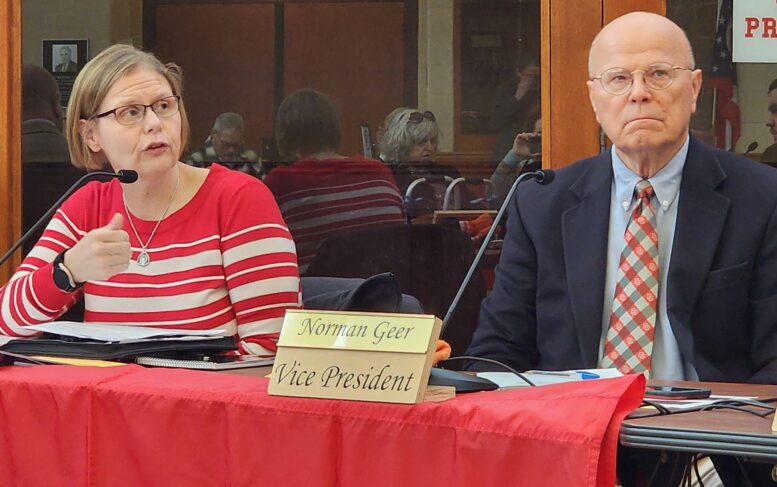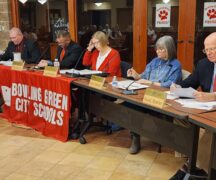By JAN McLAUGHLIN
BG Independent News
For those who closely track how much they pay in school taxes, Tuesday’s Bowling Green Board of Education meeting offered some plot twists.
Here are the CliffNotes:
- The meeting began with welcome news that the annual property tax rate for the new high school has dropped from 5.5 mills to 4.34 mills, which will save landowners money each year.
- The board then reluctantly began discussing the need to put an operating levy on the ballot in November, which will likely be an income tax.
- And the plot thickened with the overdue taxes from Rover Pipeline.
Here’s more on each of those items that will affect local taxpayers.
Less money out of people’s pockets
Low interest rates and high desire to invest in Bowling Green City School District bonds for the new high school has led to $18.6 million less in taxes that the district must collect from its residents. That means the owner of a $200,000 home will pay $80 less a year than forecasted for the new high school project.
“That’s a huge savings to the community,” said David Conley, the district’s financial consultant from Rockmill Financial. “I think we were really fortunate how things turned out.”
Conley has been working with the BG district for nearly a decade to figure out how to finance new school facilities. He said he was thrilled when the bond issue passed in November.

“It’s been a labor of love,” Conley said. “As you know, we have been working a long time. I’m excited to see the new high school. I think the kids are really going to love it.”
So it was particularly satisfying for Conley to present the news about the bond sales going so well for the district.
On Feb. 15, the district sold the bonds for the $72.8 million project.
“It was just extraordinary,” Conley said.
The millage had been estimated at 5.5 mills based on a 5.25% interest rate.
“Interest rates have been all over the place,” he said. So it was a concern how that would affect the bonds.
Bond anticipation notes allowed the funds to be invested 68 days sooner than originally planned. That added $145,000 in investment earnings. And the bonds closed 90 days in advance of the bond anticipation notes’ maturity. That added $195,000 in investment earnings.
The total estimated investment earnings for the entire term will be $5.75 million.
“That’s huge news,” Conley said.
The goal was to minimize the district’s interest costs, Conley said. That was successful, with the final combined interest rate of 4.08%. That final rate versus the estimated rate of 5.25% added up to $18.6 million less in total interest that the district has to pay.
“That means less money coming out of people’s pockets,” board member Ryan Myers said.
The bonds attracted a great deal of interest from investors. According to Conley, 45 investors put in more than $300 million in orders for the $72 million bond issue.
“This says a whole lot about how the community is perceived by investors,” he said. “This was great news.”
Board President Tracy Hovest thanked Conley for his work with the district.
“Your expertise has definitely been an asset to this district,” Hovest said.
New operating levy
On the heels of the good bond news, Hovest broke it to the board members that they need to start discussing an operational levy that should be on the November ballot. Previous discussions of the district’s five-year forecast have noted the need for more operational money by next year.
“It is not a matter of when,” Hovest said.
Hovest stressed that bond issue revenue cannot be used for operations.

Myers said he would prefer to look at an income tax for the operational levy. Norm Geer agreed, pointing out that the more people move to the district, the more money the district will collect.
Income taxes can only be collected in one-quarter percent increments, so Hovest asked Treasurer Cathy Schuller to calculate how much would be generated annually by a one-quarter, one-half, and a three-quarter percent income tax.
“I don’t want to ask for too much,” or for too little, leaving the district in a hole, Myers said.
Geer said he favors a levy for a continuing period of time, so the district can count on it every year for operations. “It allows us to do planning,” he said.
Myers said he would like to see information on continuing and term levies before making a decision.
Ardy Gonyer said the need for new or improved elementary buildings should be part of the discussion.
“How does that factor into all of this,” he said, mentioning concerns about “voter fatigue.”
Hovest told the board members to plan on continued discussions on the operating levy.
Pipeline payout?
After years of refusing to pay taxes as calculated by the state, it appears that Rover Pipeline might be forced to pay up soon.
Schuller reported that the Ohio Board of Tax Appeals ruled that the expert appraisal made on the pipeline is considered accurate. Rover is 713 miles long, traveling through 20 Ohio counties and 70 school districts.
It’s too soon to tell, but the pipeline company may have to pay what is due, plus interest and penalties, Schuller said.
“It’s still ongoing. But it’s a step forward and an overall win for students of Ohio,” she said.


